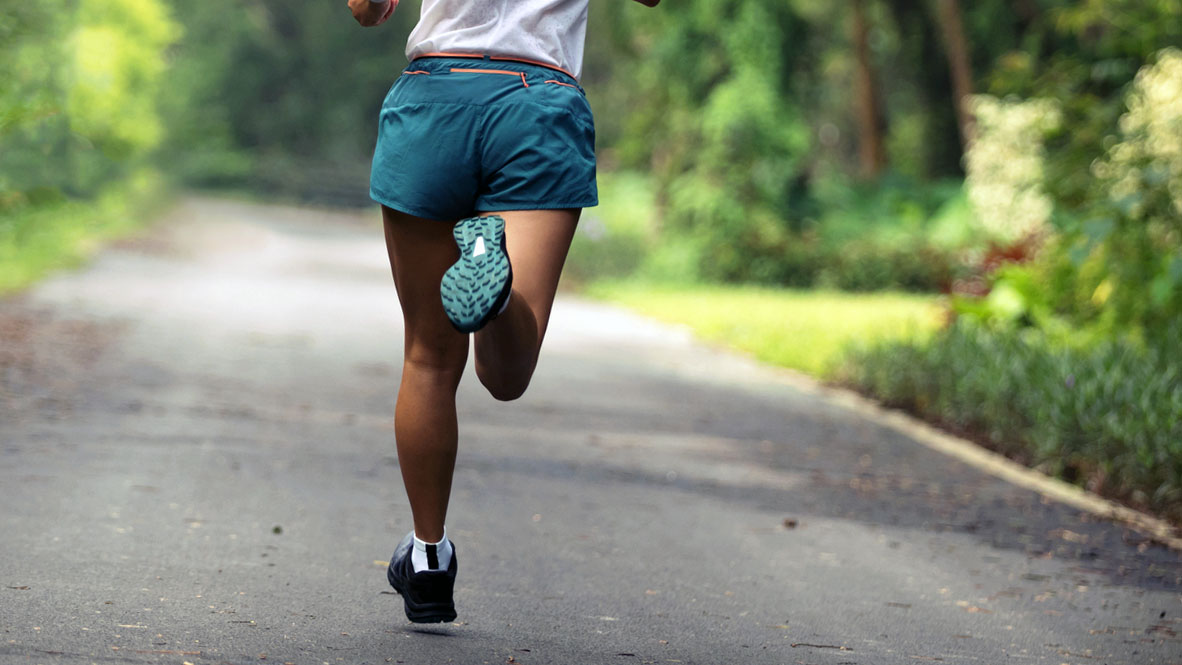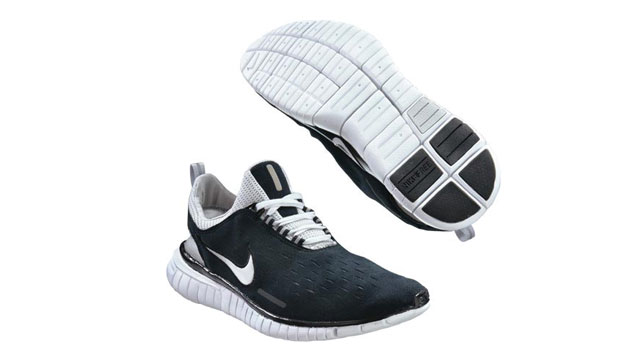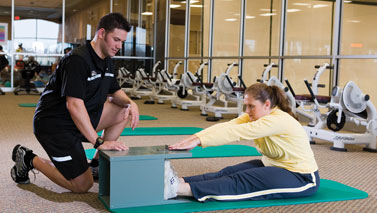Q1: Should I replace my minimalist running shoes with extra-cushioned shoes?
A: “Minimalist running is not dead,” says Jamie Mieras, a Boulder, Colo.–based podiatrist and recreational ultrarunner. “But the movement toward well-cushioned, low-drop shoes is certainly growing stronger.” At running stores, you’ll see that the number of minimalist shoes is dwindling, while the number of highly cushioned shoes — from companies like Hoka, Altra, Skechers, Vasque, Pearl Izumi, and Brooks — is on the rise.
What’s behind the apparent sea change? Sore feet, mostly. “People followed the minimalist trend without transitioning slowly enough,” says ultra-marathoner and running journalist Adam Chase. So the decline in sales of minimalist shoes is probably the result of exercisers retreating to more-cushioned shoes after having jumped into minimalist or barefoot training a little more enthusiastically than their feet could handle.
As usual in debates over fitness methodologies, the truth is that both approaches — minimal and well-supported — have their place. “It comes down to the right tool for the right job,” says Chase. Many factors, including training history, past injuries, and upcoming races, will affect your choice of shoe. “Assuming you’re healthy and adapt well to different types of footwear, consider choosing a minimalist or barefoot shoe for strength training and a more-cushioned shoe for recovery or high-mileage days,” he recommends.
Even as some of the enthusiasm for minimalist shoes wanes, one aspect of the movement is here to stay: “The difference in height between the toe and the heel of a running shoe will forever be reduced,” says Chase. “And that’s a good thing.”
Higher-heeled running shoes encourage overstriding, which increases both impact on the body and the risk of injury. So go with a minimalist or heavily cushioned sole as you wish — just don’t go back to high heels.
Q2: Intermittent Fasting and Muscle Loss
Q: Intermittent fasting promotes fat loss, but will it also lead to muscle loss?
In short, it could. “If you are losing weight, then muscle mass tends to be lost along with fat mass — on any diet,” explains Leonie Heilbronn, PhD, a professor at the Department of Medicine at University of Adelaide in Australia. That’s because whenever you’re in a caloric deficit, your body breaks down both fat and muscle tissue for energy.
It’s true that fasting diets can lead to weight loss. In a study led by Heilbronn and published in the American Journal of Clinical Nutrition, people of normal weight lost an average of 2.5 percent of their body weight after three weeks of every-other-day fasting. Unfortunately, most of the weight they lost was in the form of “fat-free mass,” a blanket term that includes bone and, yes, muscle mass.
That said, Heilbronn believes you may lose less muscle mass on a fasting diet than on a conventional diet because you’re in that catabolic state only a few days a week (as opposed to a typical reduced-calorie diet, where you’re in a reduced energy-intake state most of the time). She notes, however, that studies directly examining the difference have not yet been performed.
Everybody is different, so lab-based studies may never predict your personal experience. Your best bet? Try it and see if you like the results. And keep in mind that strength training, which builds muscle mass, is always a win-win for body composition.
(See “6 Tips to Work Out While Fasting” to learn how to stay strong and energized while refraining from food and drink.)
Q3: Too Flexible?
Q: I do a lot of yoga, and it’s made me wonder: Can yoga cause hypermobility or excessive looseness in my joints?
“It depends on how you practice yoga,” explains physical therapist Stacy Barrows, co-owner of Century City Physical Therapy in Los Angeles. Occasionally, yoga classes devolve into “posture races,” in which students rush to achieve advanced positions in the shortest possible time — and that can lead to overstretching and injury. “The point of yoga isn’t to win anything,” she explains. “Students should strive for smoothness and quality of movement rather than just an extreme range of motion in each pose.”
To determine whether you’re pushing too hard, pay attention to what’s happening in your body as you move. “You should feel your muscles working, not your joints,” explains Los Angeles–based physical therapist and longtime yoga teacher Juliana Gildesgame. By contracting the muscles around the affected joints as you practice, she explains, “you’ll make your joints more stable, rather than less so. It’s possible to be very flexible — without overstretching — if you work up to it slowly, pay attention to how you transition in and out of each pose, and practice good technique.”
Strength training a few times a week can help you build strength to support your joints, while giving your body a different movement pattern, says Gildesgame. So think about adding strength training to your regimen.
Serious yoga enthusiasts, who may be hesitant to miss a day in the studio, can benefit from yoga cross-training by trying classes from different traditions on a regular basis. “You’ll learn about each pose from a different perspective,” says Gildesgame, which keeps your practice engaging and prevents you from repeating the same movements in the same way too often.




This Post Has 0 Comments